Today Current Affairs: 29th May 2021 for UPSC IAS exams, State PSC exams, SSC CGL, State SSC, RRB, Railways, Banking Exam & IBPS, etc
Table of Contents
Near Isothermal Forging Technology : DRDO:

Defense Research and Development Organisation (DRDO) has established the near isothermal forging technology to produce all the five stages of high-pressure compressors (HPC) discs out of difficult-to-deform titanium alloy using its unique 2000 MT isothermal forge press.
- The technology has been developed by the Defence Metallurgical Research Laboratory (DMRL), a premier metallurgical laboratory of DRDO at Hyderabad.
- This is a crucial technology for establishing self-reliance in aero engine technology. With this development, India has joined the league of limited global engine developers to have the manufacturing capabilities of such critical aero-engine components.
- To meet the bulk production requirements, DMRL technology was transferred to M/s MIDHANI through a licensing agreement for technology transfer (LAToT
YUVA- Prime Minister’s Scheme For Mentoring Young Authors:
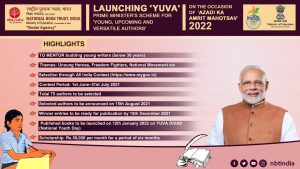
Ministry of Education has launched “YUVA- Prime Minister’s Scheme for Mentoring Young Authors”.
- YUVA is an Author Mentorship program that will train young and budding authors aged below 30 years in order to promote reading, writing, and book culture in India. It will also project India and Indian writings worldwide.
- YUVA stands for “Young, Upcoming and Versatile Authors”.
- The scheme is in line with PM’s vision of encouraging young writers to write about India’s freedom struggle.
- YUVA is a part of the India@75 Project which seeks to bring perspectives of the young generation of writers on themes including Freedom Fighter, Unsung Heroes, Unknown and Forgotten Places, etc.
- The scheme will be implemented by the “National Book Trust of India” under the Ministry of Education. Books written under this scheme will be published by National Book Trust. Books will be translated into different languages to exchange culture and literature.
- Under the YUVA scheme, a total of 75 authors will be selected by an All-India Contest.
US- Russia Open Skies Treaty:

US administration led by Biden does not seek to re-join Open Skies Treaty with Russia.
- The treaty is a key arms control agreement, that allowed the US and Russia to fly surveillance aircraft over their military facilities
- According to the US administration, the US does not seek to renter the pact because of Russia’s failure to comply with it.
- Now, the “New START treaty” is the only major arms control pact between both countries which was extended for five years recently by the US.
- The Open Skies Treaty was signed by the United States on March 24, 1992.
- It came into effect in 2002. The Treaty allows both member countries to fly surveillance aircraft over military facilities.
- The treaty was signed to promote transparency among member countries.
- 34 member states had participated in the treaty.
- Former President of the US, Donald Trump, announced its withdrawal in November 2020 while Russia announced to withdrawal in January 2021.
Steadfast Defender 21 war games:
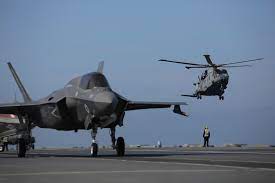
North Atlantic Treaty Organisation (NATO) is organizing “Steadfast Defender 21 war games” military exercises in Europe as tensions with Russia increases.
- In the war names, NATO troops, warships, and dozens of aircraft are taking part. Military exercises are taking place across the Atlantic, through Europe, and into the Black Sea region.
- These war games are being organized with the aim of simulating the response of a 30-nation military organization for an attack on any one of its members.
- It seeks to test the ability of NATO to deploy troops from America.
- These war games were launched in the aftermath of Russia’s decision to send thousands of troops across border areas with Ukraine.
- It has raised concern at the military alliance that launched the biggest-ever defense spending initiatives after Russian troops acquired the Crimean Peninsula of Ukraine in 2014.
- According to NATO, military exercises do not aim at Russia specifically.
- But focus on the Black Sea region, where Russia blocks free navigation of ships.
What Are Sherpas? BRICS:

The second BRICS Sherpas’ and Sous Sherpas’ meeting was conducted to discuss preparations for scheduled meeting of BRICS Foreign Ministers on 1st June.
- The BRICS Sherpas’ and Sous Sherpas’ meeting was convened under India’s Chair-ship from 25th to 28th of May.
- During the meeting, BRICS partners negotiated key deliverables for India’s char-ship at BRICS 2021.
- They also negotiated including outcome documents for Foreign Ministers’ meeting.
- Sherpa is a personal representative of the head of state or government, preparing an international summit like G7 and G20 summits.
- Sherpa usually refers to “Sherpas for G7 summit” but this designation can be extended to different regular conferences which require the participation of the head of state.
- For instance, BRICS Sherpas’ denotes representatives of BRICS Nation. Sherpa is generally quite influential even though they do not have the authority to make a final decision over any agreement.
- The name Sherpas is derived from “Sherpa people” who are Nepalese ethnic groups.
- They serve as guides and porters across the Himalayas. Thus, designating grouping as Sherpa refers to the fact that, Sherpa clears the way for the head of state at the major summit.
- The first BRICS Sherpa meeting was held in 2019 under the Presidency of Brazil in Curitiba, Brazil.
Transplantation Of Trees:
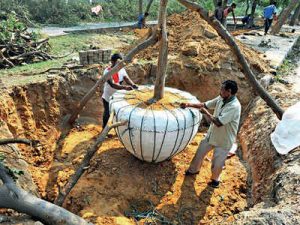
The Central Public Works Department (CPWD) wants to transplant over 1,800 trees which are inside what used to be the Indira Gandhi National Centre for the Arts (IGNCA) complex, as part of the Central Vista redevelopment project.
- A tree cannot be transplanted by simply uprooting it and placing it in a pit dug elsewhere.
- The process involves multiple steps and requires significant expertise.
- First, the soil around the tree is dug up to isolate the roots. The big branches are lopped off, leaving only small shoots for regeneration.
- This is done to make transportation of the tree to the new location easier.
- The root system is covered with wet gunny bags to protect the roots and to keep the tree hydrated.
- The tree has to be first sent to a nursery to acclimatize to a new kind of soil, and to regenerate.
- Once new shoots start sprouting, the tree is lowered into a pit created in its new spot.
- The survival rate of a transplanted tree is about 50%. If it survives, the tree may take up to 10 years to grow a full canopy similar to what it originally had.
- Not all trees can be transplanted. While peepal, ficus, semal and sheesham are tolerant to transplantation, trees such as dak, palash, arjun, shahtoot and jhilmil are not.
- Any tree that has a tap root system cannot be transplanted, as the root goes deep into the soil, and it is not possible to isolate it without damage.
- Transplanting any tree with a trunk girth of more than 80-90 cm is not advisable as the tree cannot bear the shock, and will eventually die.
Yellow Fungus:

After black and white fungus, the recent case of yellow fungus has become a cause for concern.
- Yellow fungus, also called mucor septic, initially develops by the presence of moulds (a type of fungi) in the environment.
- It may be present with unnecessary fatigue, rashes, burning sensation on skin, etc.
- Humidity levels below 30-40% can promote the growth of fungus.
- It may not start from the lungs but it invades internal organs of the body and affects the entire functioning.
- Causes: Prolonged use of steroids, contaminated environment, uncontrolled diabetes, unhygienic habits, lesser immunity, comorbidities.
- The treatment for Covid-19 includes steroids and immunosuppressants that leave the body with weak immunity.
- Symptoms:
- Weight loss, reduced appetite, lethargy are the common symptoms of yellow fungus infection.
- If not detected in time, symptoms can become more severe including pus leakage, sunken eyes, organ failure, slow healing of wounds, and necrosis (cells in the living tissues die prematurely).
- Treatment:
- Till now the only known treatment for yellow fungus is Amphotericin B injection, which is an antifungal drug also being used to treat black fungus.
- Prevention:
- Maintaining hygiene, not consuming stale food, keeping the humidity in the room in check, etc.
Black Fungus:
- Mucormycosis, previously known as zygomycosis and sometimes termed as black fungus, is generally spread by breathing in, eating food contaminated by, or getting spores of molds of the Mucorales type in an open wound.
White Fungus:
- White Fungus or Candidiasis is a fungal infection caused by a yeast (a type of fungus) called Candida.
Veer Savarkar Jayanti:

On 28th May, India paid tribute to the freedom fighter, Vinayak Damodar Savarkar (Veer Savarkar) on his birth anniversary.
- He was an Indian independence activist, politician, lawyer, and writer.
- He is also known as Swatantryaveer Savarkar.
- Birth: Born on 28th May 1883 in Bhagur, a village near Nashik in Maharashtra.
- Founded a secret society called Abhinav Bharat Society.
- Went to the United Kingdom and was involved with organizations such as India House and the Free India Society.
- He was the president of Hindu Mahasabha from 1937 to 1943.
- Savarkar wrote a book titled ‘The History of the War of Indian Independence’ in which he wrote about the guerilla warfare tricks used in the 1857 Sepoy Mutiny.
- He also wrote the book ‘Hindutva: who is Hindu?’.
- Arrested in 1909 on charges of plotting an armed revolt against the Morley-Minto reform (Indian Councils Act 1909).
- Arrested in 1910 for his connections with the revolutionary group India House.
- One of the charges on Savarkar was abetment to murder of Nashik Collector Jackson and the second was waging a conspiracy under Indian Penal Code 121-A against the King emperor.
- Following the two trials, Savarkar was convicted and sentenced to 50-years imprisonment also known as Kala Pani and transported in 1911 to the Cellular Jail in the Andaman and Nicobar Islands.
- Death: He died on 26th February 1966 due to fasting on his own wish of death.
DBT Of The Cooking Cost Component Of The Mid-Day-Meal Scheme:
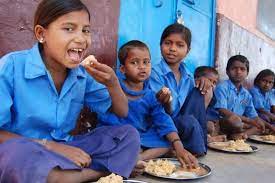
The Ministry of Education has approved the proposal to provide monetary assistance to students through Direct Benefit Transfer (DBT) of the cooking cost component of the Mid-Day-Meal (MDM) Scheme, to all eligible children.
Implications of DBT for MDM Scheme:
- With schools closed for months due to Covid-19, this move will give a fillip to the Midday Meal program.
- This is in addition to the Government of India’s announcement of distribution of free-of-cost food grains at Rs. 5/kg per person per month to nearly 80 crore beneficiaries under the Pradhan Mantri Garib Kalyan Anna Yojana (PM-GKAY).
- It will help safeguard the nutritional levels of children and aid in protecting their immunity during challenging pandemic times.
- This one time special welfare measure will benefit about 11.8 crore children studying in class I to VIII in the 11.20 lakh Government and Government aided schools across the country.
- The central government will provide additional funds of about Rs. 1200 crore to state governments and UT administrations for this purpose.
About Mid-Day-Meal Scheme:
- Launch: It is a centrally sponsored scheme which was launched in 1995.
- It is considered the world’s largest school feeding programme aimed to attain the goal of universalization of primary education.
- Nodal Ministry: Ministry of Education.
- Aim: To address hunger and malnutrition, increase enrolment and attendance in school, improve socialization among castes, provide employment at grassroots level especially to women.
- Provisions:
- Provides cooked meals to every child within the age group of six to fourteen years studying in classes I to VIII who enrolls and attends the school.
- Cooked meal having nutritional standards of 450 calories and 12 gm of protein for primary (I-V class) and 700 calories and 20 gm protein for upper primary (VI-VIII class).
- If the Mid-Day Meal is not provided in school on any school day due to non-availability of food grains or any other reason, the State Government shall pay food security allowance by 15th of the succeeding month.
- Beneficiaries: All children in government and aided schools and madrasas supported under Samagra Shiksha.
Jayanti : Species Of Cricket:
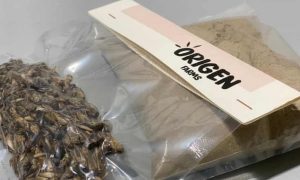
Jayanti has become the twelfth subgenus, or species, of cricket identified under the genus Arachnomimus Saussure, 1897.
- Found in the Kurra caves of Chhattisgarh in April 2021, the new subgenus was named Jayanti after Professor Jayant Biswas, one of the leading cave explorers in the country.
- Arachnomimus is the genus name given by Swiss Entomologist Henri Louis Frédéric de Saussure in 1878 to crickets that resembled spiders.
- This is apt because crickets of this group are commonly called spider crickets because of their smaller body size and long legs.
- The newly discovered subgenus, Indimimus, is different from the two subgenera, Arachnomimus and Euarachnomimus, because of the male genitalia structure.
- Crickets are noticeable for their loud calls, especially at night.
- Male crickets produce this sound by rubbing their wings against each other to attract females.
- The females listen to these calls using ears located on their legs and approach the males for mating and reproduction.
- Interestingly, males of the new Jayanti subgenus cannot produce sound and their females don’t have ears.
- The crickets were found on the walls of the Kurra caves which don’t have light inside.
- They may be communicating by beating their abdomen or any other body part on the cave walls.
The 43rd GST Council:

The 43rd GST Council met under the Chairmanship of the Union Finance Minister.
- The GST Council has made the following recommendations:
- As a COVID-19 relief measure, a number of specified COVID-19 related goods such as medical oxygen, oxygen concentrators, and other oxygen storage and transportation equipment, certain diagnostic markers test kits and COVID-19 vaccines, etc., have been recommended for full exemption from IGST.
- In view of rising Black Fungus cases, the above exemption from IGST has been extended to Amphotericin B.
- To support the LympahticFilarisis (an endemic) elimination program being conducted in collaboration with WHO, the GST rate on Diethylcarbamazine (DEC) tablets has been recommended for reduction to 5% (from 12%).
- GST on MRO services in respect of ships/vessels shall be reduced to 5% (from 18%).
- The Finance Minister also announced an amnesty scheme for small GST taxpayers, allowing filing of returns with reduced late fees.
- the GST Council will hold a special session to discuss extending paying compensation to states beyond 2022.
- Annual return filing has also been simplified. The Council has recommended amending the CGST Act to allow for self-certification of reconciliation statements, instead of getting it certified by Chartered Accountants.
GST Council:
- It is a constitutional body (Article 279A) for making recommendations to the Union and State Government on issues related to Goods and Services Tax.
- The GST Council is chaired by the Union Finance Minister and other members are the Union State Minister of Revenue or Finance and Ministers in charge of Finance or Taxation of all the States.
- It is considered as a federal body where both the center and the states get due representation.




